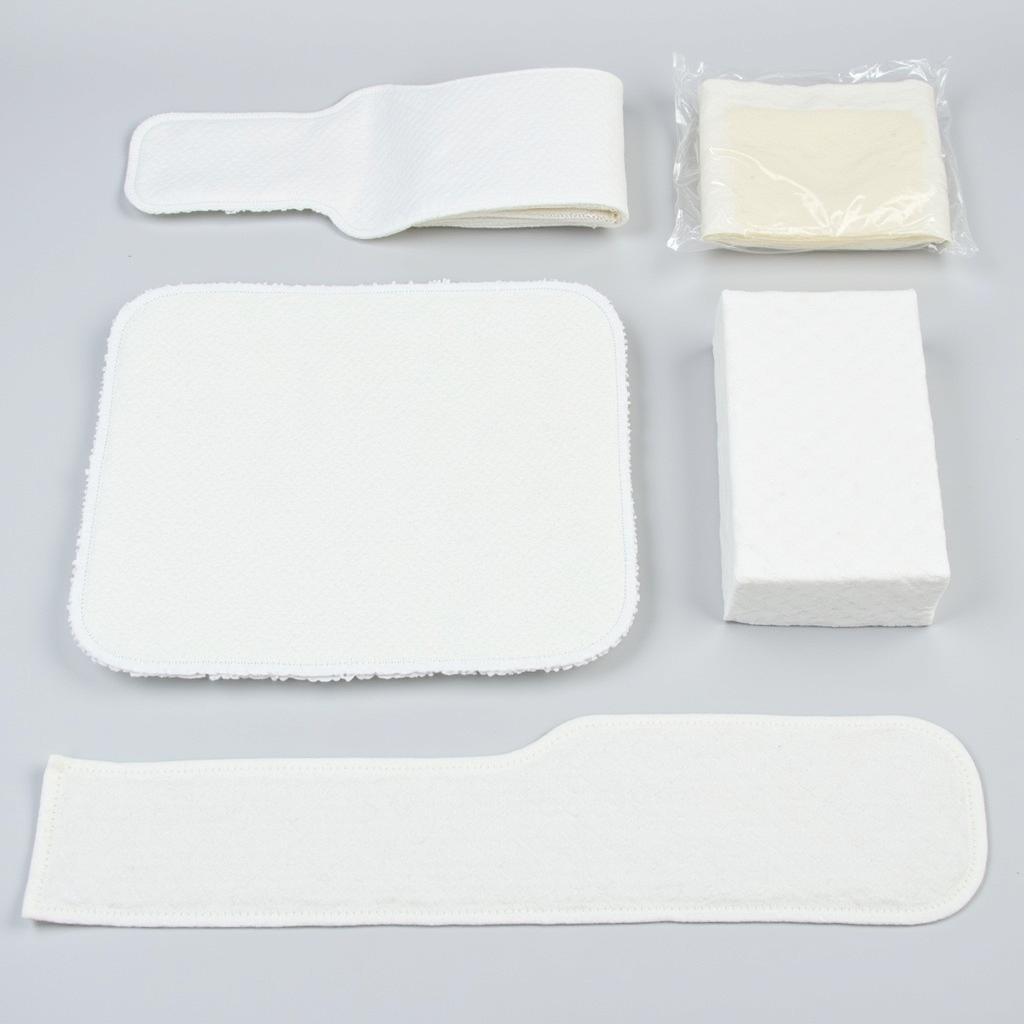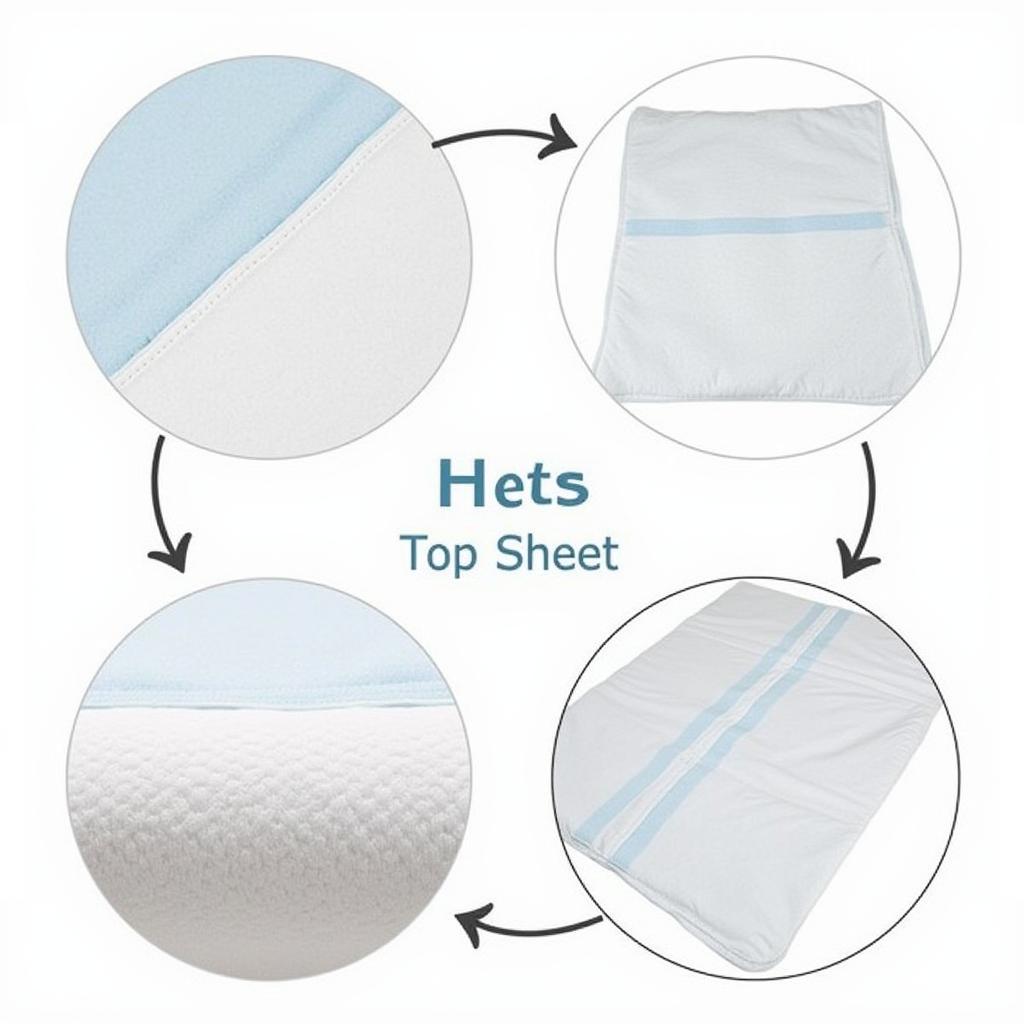Disposable Hospital Bed Pads are an essential component of patient care, offering a hygienic and comfortable surface for individuals recovering from illness, injury, or surgery. These pads, often referred to as incontinence pads or bed chucks, provide an extra layer of protection against spills, stains, and moisture, ensuring a clean and dry environment for patients.
Understanding the Importance of Disposable Hospital Bed Pads
 Variety of Disposable Hospital Bed Pads
Variety of Disposable Hospital Bed Pads
Hospital beds, while designed for patient comfort, can present challenges when it comes to maintaining hygiene. Disposable bed pads act as a barrier, protecting the mattress from bodily fluids, spills, and stains. This is particularly crucial for patients with incontinence, excessive sweating, or those recovering from wounds.
By absorbing moisture and preventing it from reaching the mattress, these pads contribute significantly to infection control and promote a healthier healing environment. They also help to minimize odors, ensuring a more pleasant experience for both patients and caregivers.
Types of Disposable Hospital Bed Pads
Navigating the world of disposable hospital bed pads can feel overwhelming with the wide array of options available. Understanding the different types can help you make informed decisions based on your specific needs. Here’s a breakdown of the most common types:
1. Absorbency Levels
Disposable bed pads come in various absorbency levels, ranging from light to maximum.
- Light Absorbency: Ideal for minor spills, dribbles, or perspiration.
- Moderate Absorbency: Suitable for managing light to moderate incontinence episodes.
- Heavy Absorbency: Designed for individuals with heavy incontinence or those requiring overnight protection.
- Maximum Absorbency: Offers the highest level of protection, ideal for extended use or managing significant fluid loss.
2. Materials
The material composition of disposable bed pads impacts their comfort, durability, and absorbency. Common materials include:
- Fluff Pulp: Economical and widely available, fluff pulp offers decent absorbency.
- Polypropylene: This material provides a soft and comfortable surface while offering moderate absorbency.
- Superabsorbent Polymers (SAP): Found in higher-end pads, SAPs can absorb and retain large volumes of fluid, minimizing leakage and maintaining dryness.
 Key Features of a Hospital Bed Pad
Key Features of a Hospital Bed Pad
3. Sizes and Shapes
Disposable bed pads are available in various sizes to accommodate different bed dimensions and patient needs. Common sizes include:
- Chair Pads: Designed for use on wheelchairs or standard chairs.
- Bed Pads: Typically available in sizes ranging from twin to king-size beds.
4. Additional Features
Some disposable hospital bed pads come equipped with additional features to enhance comfort and functionality, such as:
- Adhesive Strips: Secure the pad to the mattress, preventing slippage and ensuring optimal protection.
- Wetness Indicators: Change color when wet, signaling the need for replacement.
- Odor Control Technology: Neutralizes unpleasant odors, creating a fresher environment.
Choosing the Right Disposable Hospital Bed Pads
Selecting the appropriate disposable hospital bed pads involves considering several factors. It’s essential to choose pads that effectively meet the individual’s needs while prioritizing comfort and hygiene.
-
Assess the Level of Incontinence: Determine the severity of incontinence (light, moderate, heavy) to choose pads with adequate absorbency.
-
Consider Bed Size: Opt for pads that comfortably fit the bed’s dimensions, ensuring full coverage and minimizing leakage.
-
Prioritize Comfort: Look for pads made from soft and breathable materials to maximize patient comfort, especially during prolonged use.
-
Evaluate Additional Features: Consider features like adhesive strips, wetness indicators, and odor control based on specific requirements.
-
Budget Considerations: While disposable hospital bed pads are available at various price points, it’s crucial to prioritize quality and effectiveness over cost-saving measures.
Frequently Asked Questions (FAQs)
1. How often should disposable hospital bed pads be changed?
The frequency of changing disposable hospital bed pads depends on the level of incontinence and the pad’s absorbency. Generally, it’s recommended to change them when wet or soiled to maintain hygiene and prevent skin irritation.
2. Are disposable hospital bed pads environmentally friendly?
While most disposable hospital bed pads are not biodegradable, there are eco-friendly options available made from sustainable materials. Consider exploring these alternatives to minimize environmental impact.
3. Can disposable hospital bed pads be washed and reused?
No, disposable hospital bed pads are designed for single-use only. Washing and reusing them can compromise their absorbency and hygiene.
4. Are there specific disposal guidelines for disposable hospital bed pads?
Always follow local regulations and healthcare facility guidelines for the proper disposal of used hospital bed pads. They should be disposed of as biohazardous waste in designated containers.
Conclusion
Disposable hospital bed pads play a vital role in maintaining patient hygiene, comfort, and dignity. By understanding the different types available and considering individual needs, you can make informed choices to ensure optimal care and well-being.
When choosing disposable hospital bed pads, explore our wide selection of hospital bed pads disposable, disposable pads for hospital beds, and other incontinence products designed to provide comfort and protection.
For personalized assistance in selecting the right products, please contact our dedicated customer support team.